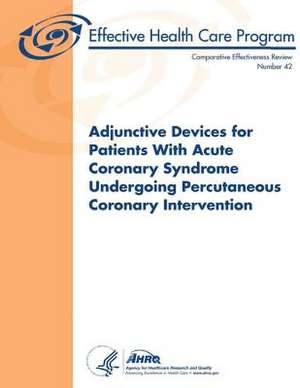Adjunctive Devices for Patients with Acute Coronary Syndrome Undergoing Percutaneous Coronary Intervention
Autor U. S. Department of Heal Human Services, Agency for Healthcare Resea And Qualityen Limba Engleză Paperback
Preț: 295.88 lei
Preț vechi: 311.45 lei
-5% Nou
Puncte Express: 444
Preț estimativ în valută:
56.62€ • 60.54$ • 47.21£
56.62€ • 60.54$ • 47.21£
Carte disponibilă
Livrare economică 27 martie-10 aprilie
Preluare comenzi: 021 569.72.76
Specificații
ISBN-13: 9781484054475
ISBN-10: 1484054474
Pagini: 526
Dimensiuni: 216 x 279 x 27 mm
Greutate: 1.21 kg
Editura: CREATESPACE
ISBN-10: 1484054474
Pagini: 526
Dimensiuni: 216 x 279 x 27 mm
Greutate: 1.21 kg
Editura: CREATESPACE
